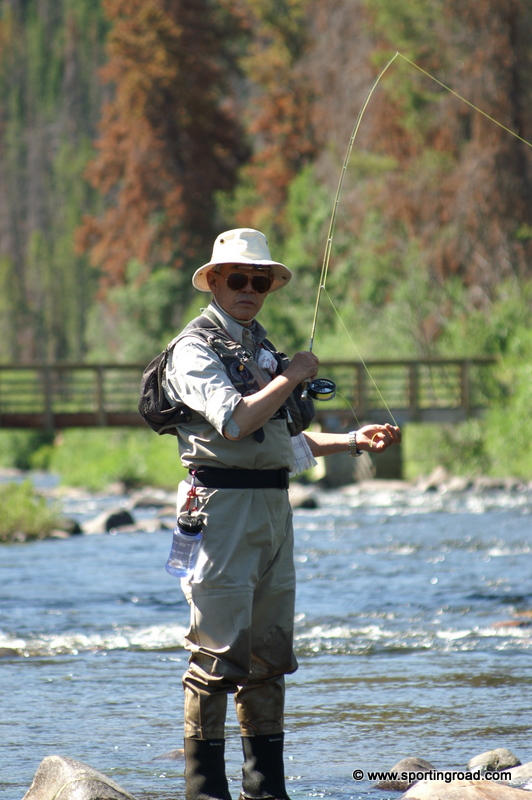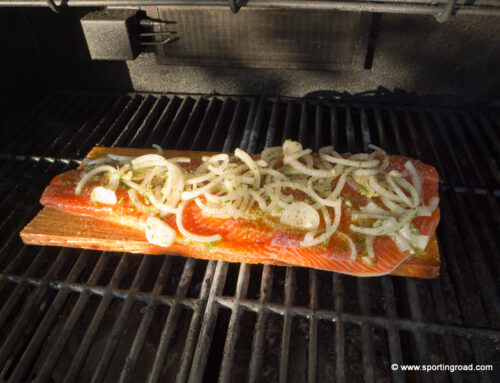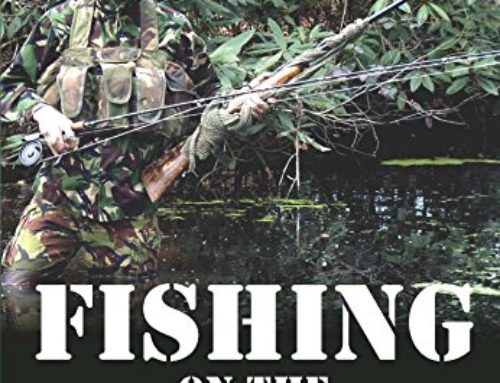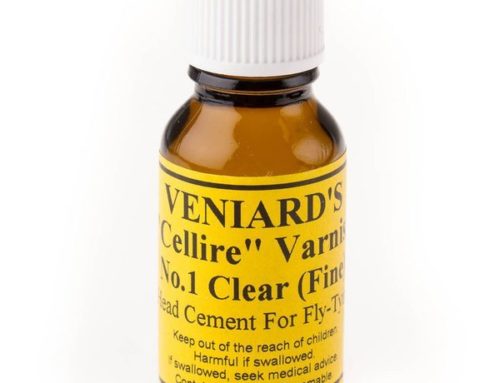Chung’s RS-II a fishing pearl
Rim Chung, originator of the RS-II, remains an active fly-fisherman.By KARL LICIS and SPECIAL TO THE DENVER POST | The Denver Post
PUBLISHED: February 2, 2010 at 1:22 pm
UPDATED: May 6, 2016 at 5:03 pm
When Rim Chung came to America, little did he know he would create what might be the most effective fishing fly ever devised for Colorado’s South Platte River.ADVERTISING
Perhaps it was inevitable. When he arrived in Denver in 1968, the elements for development of the RS-II were already in place.
First, Chung already was an accomplished fisherman.
“I probably had a certain knack for it,” he said, recalling his childhood in South Korea, where he grew up fishing with long, limber bamboo rods for saltwater fish, with live shrimp as the bait of choice. “I was a good fisherman when I was 15.”
Equally important, he and his fellow fishermen were inquisitive. They engaged in lively discussions of the fine points of their fishing — the precise best way to place a shrimp onto a hook and exactly how it should be presented to the fish.
He brought some pearls of Oriental philosophy, including an observation by ancient Chinese sages that man should strive to be as one with nature, in this case the water, and recognition of a moral responsibility to the effect, “Why disgrace the fish by not learning about it?”
Those qualities would serve him well when he took up fly-fishing in 1970, but the main catalyst leading to creation of the RS-II might have been something in his nature that told him the prevailing approaches to the sport were not necessarily the best.
“When I do some self-reflection, I think I must have been born an iconoclast,” said Chung, who will be 76 in March, relaxing in the Hook Flyfishing shop in Highlands Ranch. “I’ve always questioned the traditional or the accepted way of doing things.”
Chung and Hiram Taylor will lecture at next week’s annual fly-tying clinic sponsored by the West Denver Chapter of Trout Unlimited.
Chung’s river of choice was the South Platte because it was reasonably close to Denver and the Cinderella City mall, where he operated the Korea Imports shop with his late wife until 1987. With catch-and-release regulations in place, Cheesman Canyon was emerging as a world-class trout fishery, and short-line nymphing was becoming recognized as the most effective technique for fishing there.
Chung became a self-described better-than-average nymph fisherman in part by studying the techniques of Ralph Smith and Chuck Fothergill, but many popular fly patterns of the era left something to be desired.
“They had many common characteristics in the way they were tied and the materials used,” Chung said. “They required specific colors — the March Brown had to be brown, the pale morning dun had to be a certain color, and so on. The nymphs were very fat; they were obese, like the kids in school today.
“When I examined the natural mayflies they had a long, slender body. That’s what the fish were eating, and that’s what I wanted to imitate.”
He began experimenting with different hooks and materials. In due time, the RS-II emerged, with its characteristic two-fiber tail, slender body made of natural beaver fur, wing and prominent thorax.
Chung enjoyed consistent success with his creation and others took notice. He was happy to share the pattern with other fishermen. The RS-II soon was appearing in area fly-fishing shops. Its popularity spread throughout the region and eventually it was marketed by major retailers.
“Lots of people tie it now, but there’s still something special about Rim’s flies,” said Andy Huber, co-owner of Hook Flyfishing and a longtime friend and fishing partner.
Though developed for the South Platte, the RS-II in a range of colors and sizes has proven effective on many other waters. Chung is not surprised.
“Other patterns like the Hare’s Ear, Pheasant Tail and Brassie that are effective here were developed in England and that’s another county,” he said. “If you present an RS-II of the appropriate size and color reasonably well on another river — even one that has mainly caddis or some other type of insect — the fish will go for it.”
Chung’s fishing itinerary underscores that point. Though he seldom returns to the South Platte because lingering impacts from the Hayman fire have degraded the fishery, he regularly fishes the Arkansas River below Pueblo Dam in winter because it’s relatively warm and has an abundance of aquatic insects and fish.
Other favorites include the Colorado, the Eagle and the North Fork of the Colorado below Shadow Mountain Reservoir.
“I’m attracted to any young lady who happens to be smiling,” he said. “In Colorado we have good fishing on almost any stream before the spring runoff.”
Chung also continues to tie flies and fine-tune existing patterns. The Avatar is a new incarnation of the venerable RS-II. He continues to share his knowledge with others and reflects on the history of the RS-II with quiet satisfaction.
“Had I been struck with any degree of cleverness, I could have made a lot of money from it,” he said. “But I didn’t know how well it would be received. If it benefited Western fly-fishermen, I would have been satisfied.”
The RS-II
Hook: Tiemco 101 (straight eye) in size to match prevailing aquatic insects.
Tail: Microfibetts in dark dun color.
Body: Natural beaver fur.
Wing: Very light gray web from saddle hackle.
Thread: 8/0 to match the color of the body.






